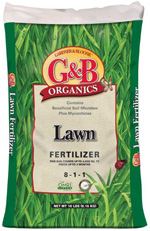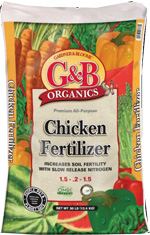|

     
|
 |
Featured Quote: "I appreciate the misunderstanding I have had with Nature over my perennial border. I think it is a flower garden; she thinks it is a meadow lacking grass, and tries to correct the error." |
 |
 |
|
Planting There's still time to plant roses. They are full of buds and blooms right now--and they are simply gorgeous. If you are a beneficial insect lover, flat-topped flowers like Shasta daisies, scabiosa, strawflowers, and yarrow are perfect additions to your garden for feeding them. Beneficial insects such as the almost microscopic parasitic wasps, ladybugs, etc. keep other insect pests away from your vegetable gardens by eating aphids, scale, and other annoying intruders. You can use beautiful flowers to tempt these garden friends into your garden. Try putting some of these flowers near to your rose garden for aphid control! The narcissus and daffodils are blooming, as well as other spring blooming bulbs. As soon as the blooms are spent, you can deadhead--but don't remove the foliage! The bulb needs that green foliage to add nutrients back to the bulb for next year's flowers. Hide the clippers for a little while longer. Try an old-fashioned technique of braiding the leaves. If you must cut, leave at least half of the leaf length for the bulb. It will thank you with next year's bloom! It's time to start warm season crops. Coastal areas can continue planting cool season crops like the leaf lettuces, radishes, and spinach for a while. Inland zones (not the high desert, though) can start the warm season vegetables such as beans, corn, squashes, cucumber, eggplant, tomatoes and peppers. We have them all and more. Maintenance You may see some chlorosis on your acid-loving plants like the azalea or camellia, and possibly on your citrus. This yellowing of the leaves between the veins is a sign of iron deficiency for the plant. Feed with a good iron supplement. Especially near the coast, this is the time we begin to see powdery mildew on our rose foliage (and other plants too). There are several different foliar fungicidal sprays to that can help. Aphids will be back. Remember that you can first wash them off with water. Really, it does help. For more severe infestations, ask us to recommend something suitable for your particular plants. Continue to replenish your mulch and maintain a 2-4" blanket over your soil. |
 |
|
Perhaps one of the most versatile plants available for home gardens is the fragrant rosemary. A plant that dates back to ancient Roman times, rosemary remains as popular as ever due to its intensely fragrant foliage and bright, vivid blue flowers. The foliage can add flavor and spice to cooking as well as aroma to potpourri and beauty to flower arrangements. Rosemary plants are evergreen, and are not only attractive to look at but also easy to grow. They tolerate poor soil conditions, are very drought and heat tolerant once established and require only occasional feeding to keep them happy. They prefer full sun but will tolerate partial shade locations as well. Rosemary plants are generally divided into two different types--upright and trailing. Upright varieties have rigid upright branches with aromatic needle-like leaves. Most upright varieties can grow up to 4-6 feet high and half as wide. They can be placed as individual specimens or used to create beautiful low to medium-sized hedges. Trailing varieties create a beautiful flow of fragrant foliage that forms an attractive carpet that can cascade from a container or rock wall. Trailing varieties also look great in rock gardens. These ground cover types generally grow 1-2 feet tall and can spread as much as 6-8 feet wide, if left untrimmed. Rosemary plants are also are excellent for slopes and useful in erosion control. Consider adding some rosemary plants to your garden. You'll love the fragrant foliage, as well as the butterflies and hummingbirds the beautiful blue flowers attract. |
 |
|
Spring is here. The cool season grasses such as fescue, ryegrass, and bluegrass are those lawns over which people have exclaimed, "You look marvelous!" (Can't you just hear Billy Crystal?) They have been bright green all winter. They are still growing fast; mow them weekly with a rotary mower (to 1 1/2 inches in height). You should be feeding all established lawns now with a complete lawn fertilizer--containing phosphorus and potassium as well as nitrogen--to get warm-season grasses off to a good start and keep cool-season grasses going longer. A healthy, well-fed lawn is better able to withstand pests and diseases and choke out weeds Warm-season grasses, such as Bermuda, dichondra, and zoysia, are waking up from winter dormancy. As they start growing, begin mowing weekly with a reel mower to the correct height for each. Mow common Bermuda to 1 inch, hybrid Bermuda to 1/2 or 1/4 inch, St. Augustine to between 3/4 and 1 1/4 inches, and zoysia to 3/4 to 1 inch height. Cut Adalayd grass with a rotary mower between 3/4 and 1 inch in height. We have mentioned two different kinds of lawn mowers: rotary and reel. A rotary mower is one in which one blade spins horizontally and uses a sucking and tearing action to cut the blades of grass. A reel mower is one in which the blades spin vertically and use a scissoring action to cut the blades of grass. You notice that we recommend fertilizing with a complete fertilizer. While nitrogen gives your lawn top growth and a healthy green color you can see, phosphorus and potassium feed the roots and growth systems of the plant that are unseen but just as important. Phosphorus and potassium are longer lasting in soil than nitrogen, so one feeding a season with them is often adequate. After this complete feeding, you can switch to a less expensive, pure nitrogen fertilizer if desired, and feed warm-season grasses with it once a month for the rest of the growing season. Before applying your complete fertilizer, be sure to read the instructions for your lawn type. Apply fertilizer when the ground is damp and grass blades dry, and follow up by watering deeply. Otherwise, you risk burning your lawn. As an alternative fertilizer for the cool season lawn, add coated slow-release fertilizer. Cool-season grasses need little or no fertilizer during the warmer months of the year. Slow release fertilizer will work perfectly for this type of lawn. Irrigate all lawns now, according to their individual needs, if rains have not been adequate. Both warm- and cool-season grasses may be bought as sod, and cool-season grasses can be planted from sod any month year-round. Although you can plant both warm- and cool-season grasses from seed this month, fall is actually a better time to plant cool-season grass seed. This is because fall planting gives cool-season grasses planted from seed more time to establish a root system before summer heat arrives. When planting warm-season grasses, wait until the weather has warmed up in your area. (If you plan to plant zoysia, it's best to wait until June.) There are numerous lawn types and you should investigate each of them before choosing and planting one. How do you choose which grass is right for you? There are many considerations: sun, shade, foot traffic, pets, children, hardiness, style, color, and simply the "look" that you like. When planting a new lawn, regardless of the type of grass and method of planting you choose, be sure to prepare the site thoroughly. If you're planting an invasive grass, such as Bermuda or an invasive variety of zoysia, first install edging to keep it from creeping into borders. For all lawns, roto-till deeply, add plenty of soil amendment, then level and roll this amended ground. "Level" might mean rolling the area completely flat or it may mean compacting the soil but adding mounded areas of interest. The point is to level out soil so that your new lawn is not filled with hundreds of hills and valleys that would make walking on it (and mowing it) difficult. If you have chosen to put in a seed lawn, sprinkle seeds evenly. This is most efficiently done using a hand-held fertilizer spreader or a seed spreader and covering the seeds with mulch or a lawn topper product. Perhaps you are putting in a lawn that can be grown from stolons. Stolons are little portions of the plant that will root once in contact with the soil. St. Augustine is an example of this type of grass. Either roll stolons with a roller to press them into the soil or simply partially cover them with topsoil or a lawn topper product. Keep your freshly planted lawn damp until established. Sprinkle it two or three times daily, and avoid watering late in the day. Just water and watch. In a few months--voilà--your new lawn! |
 |
|
Is rainwater really better than faucet water for my plants? Answer: Yes. Many municipal water systems put chlorine and other chemicals in the water. Chlorine is bad for soil bacteria, not to mention our air. Rainwater is oxygenated, un-chlorinated and warmer than tap water, qualities that make it a better source for plants and safer for the environment. Cold tap water can also "shock" your plants. There is a growing movement to conserve water by collecting rainwater in plastic barrels. The water collected this way is better for plants, plus you don't have to pay for it. It also reduces energy consumption--every 1,000 gallons of tap water requires about one kilowatt hour of energy to be treated and pumped. Reducing such water use also slows the need to expand municipal water treatment and sewage plants. If you decide to use a rain barrel, make sure it's childproof. To be safe for kids (and inquisitive animals), it should have a secure lid that can't be opened easily. You don't want anyone using your rain barrel as a swimming pool! |
 |
|
What You'll Need:
Step by Step:
|
 click here for a printer friendly version of this page
click here for a printer friendly version of this page
 |
Written content © Garden Partners LLC, or respective authors. All Rights Reserved. Privacy Policy. All written content contained in this site is protected by United States copyright law and may not be reproduced, distributed, transmitted, displayed, published, or broadcast without prior written permission of Garden Partners, LLC. You may not alter or remove any trademark, copyright or other notice from copies of the content. |




